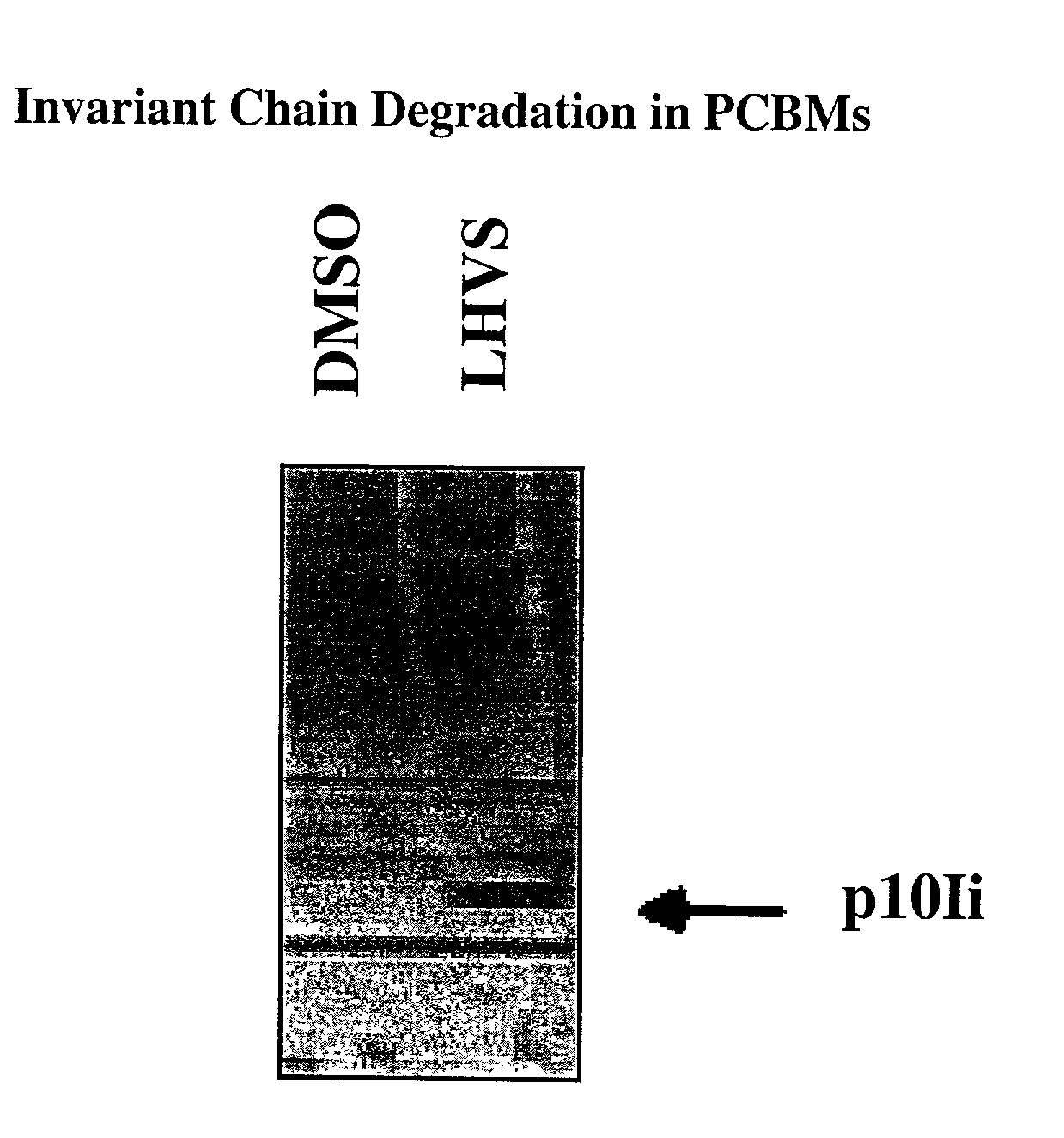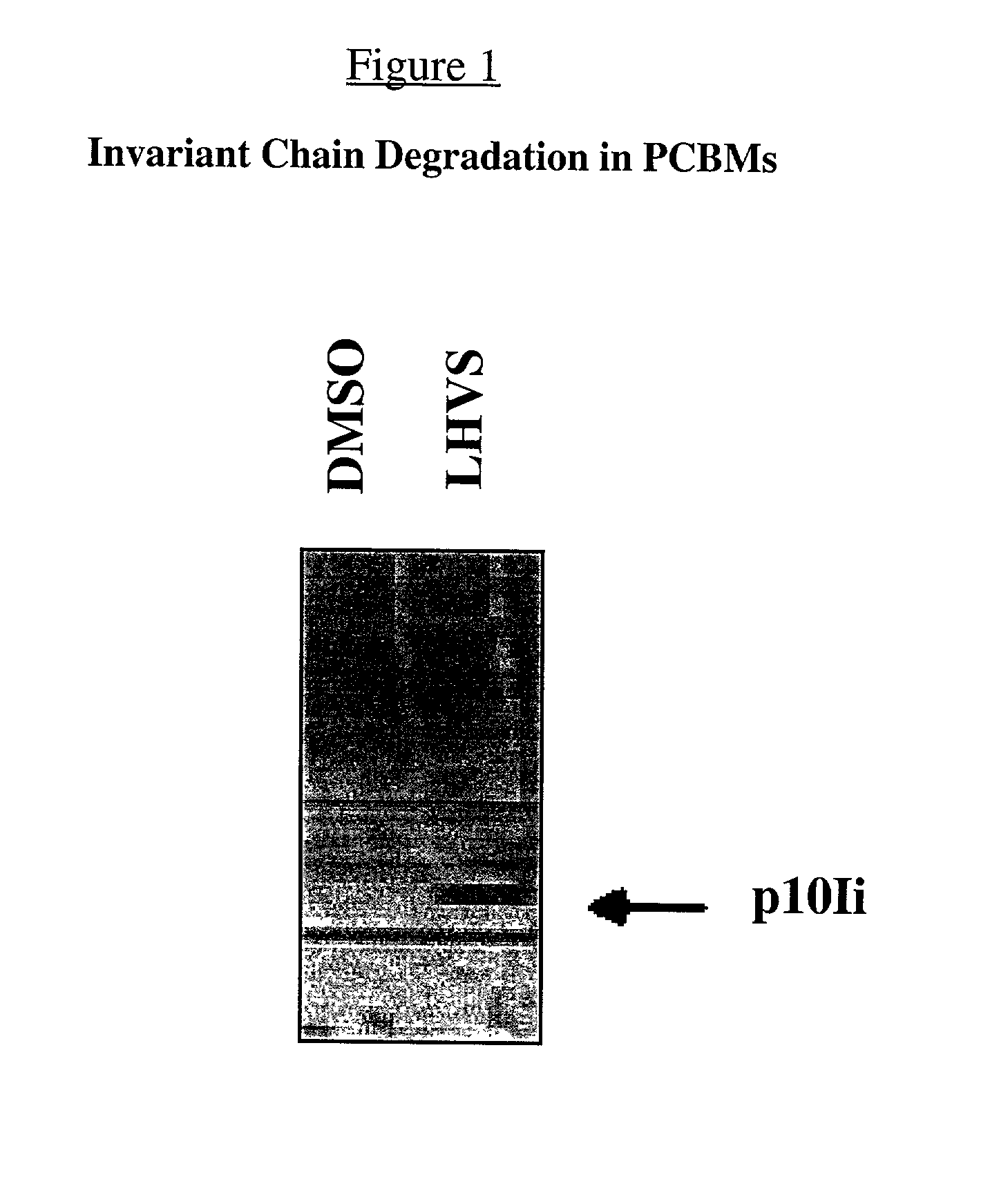Method of monitoring the effect of Cathepsin S inhibitors
a technology of cathepsin s and in vivo administration, which is applied in the field of monitoring the effect of in vivo administration of cathepsin s inhibitors, can solve the problems of reducing the presentation of antigen to cd4+t cells, other side effects, and difficulty in determining the efficacy of in vivo administration, so as to ensure the efficacy of in vivo treatment and be more reliable in determining in vivo efficacy
- Summary
- Abstract
- Description
- Claims
- Application Information
AI Technical Summary
Benefits of technology
Problems solved by technology
Method used
Image
Examples
example 1
Monitoring Cathepsin S Inhibition in Human Blood
[0026]The effect of in vivo administration of Cathepsin S inhibitors, in a clinical trial setting, can be monitored by measuring accumulation of an intermediate degradation product of invariant chain (Ii), i.e. the p10Ii fragment, in blood of dosed subjects. Briefly, after administration of Cathepsin inhibitors for a certain period of time, preferably 16–30 hr, blood is drawn and white blood cells are purified, e.g. either by lysis of red blood cells or by a FICOLL gradient centrifugation. Whole cell lysates of WBC are then made and analyzed by either a Western blot assay or an ELISA assay. For Western assay, cell lysates are first resolved on SDS-PAGE gels. After transferring to nitrocellulose membrane, Ii and its intermediate degradation products, including the p10Ii, can then be detected using a mouse mAb against Ii , e.g. Pin1.1 or rabbit polyclonal antibodies specific for the C-terminal of the p10Ii fragment. For ELISA assay, a pa...
PUM
| Property | Measurement | Unit |
|---|---|---|
| time | aaaaa | aaaaa |
| pH | aaaaa | aaaaa |
Abstract
Description
Claims
Application Information
 Login to View More
Login to View More - R&D
- Intellectual Property
- Life Sciences
- Materials
- Tech Scout
- Unparalleled Data Quality
- Higher Quality Content
- 60% Fewer Hallucinations
Browse by: Latest US Patents, China's latest patents, Technical Efficacy Thesaurus, Application Domain, Technology Topic, Popular Technical Reports.
© 2025 PatSnap. All rights reserved.Legal|Privacy policy|Modern Slavery Act Transparency Statement|Sitemap|About US| Contact US: help@patsnap.com


